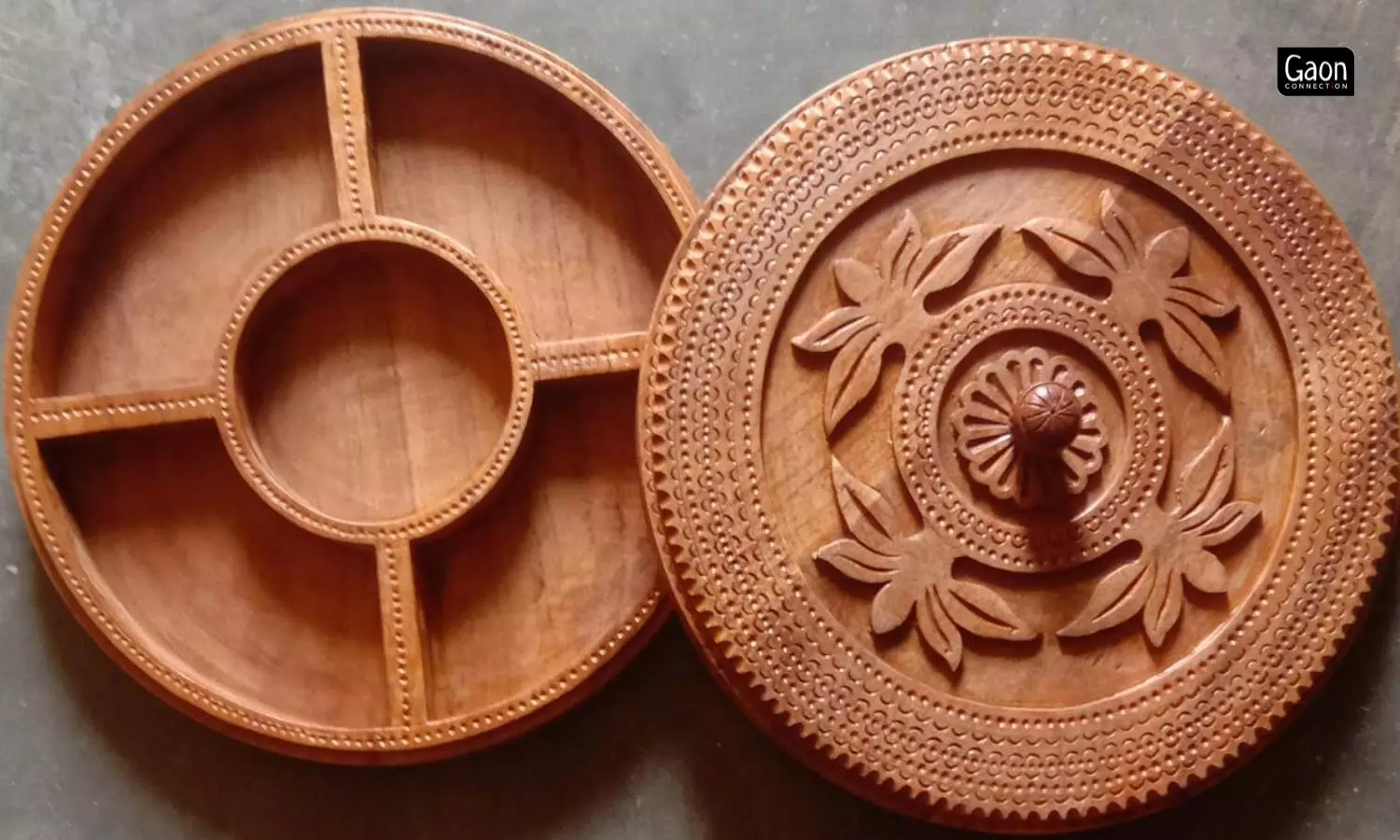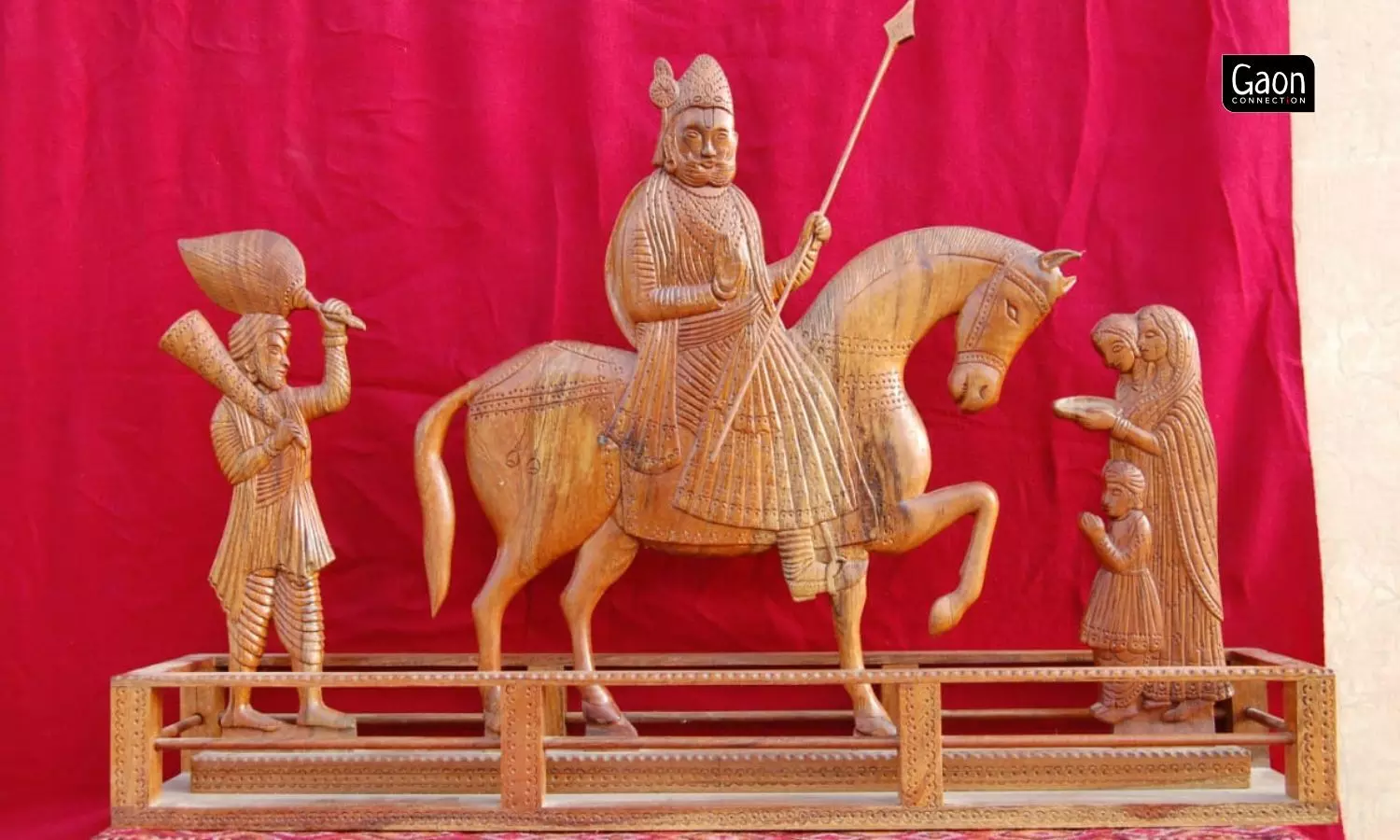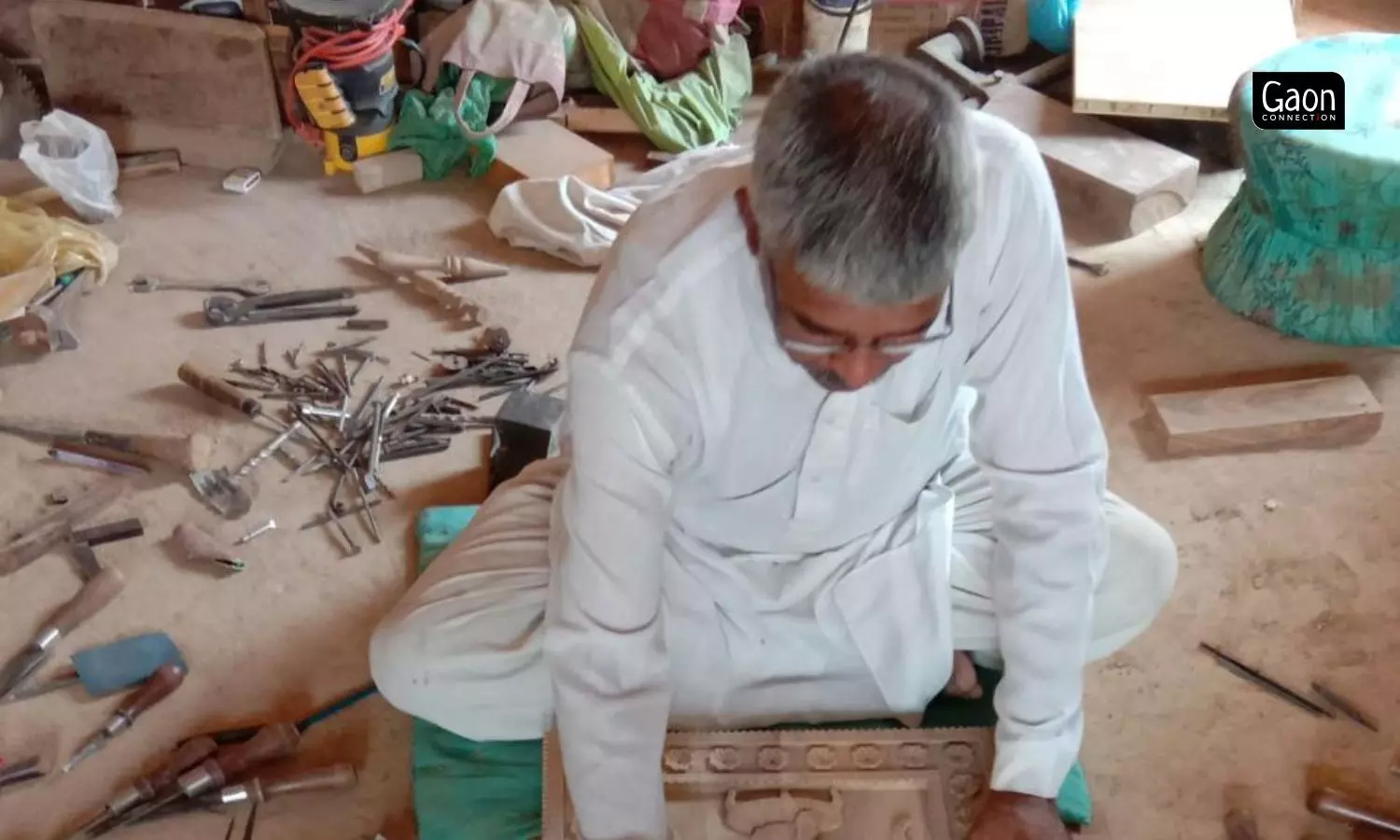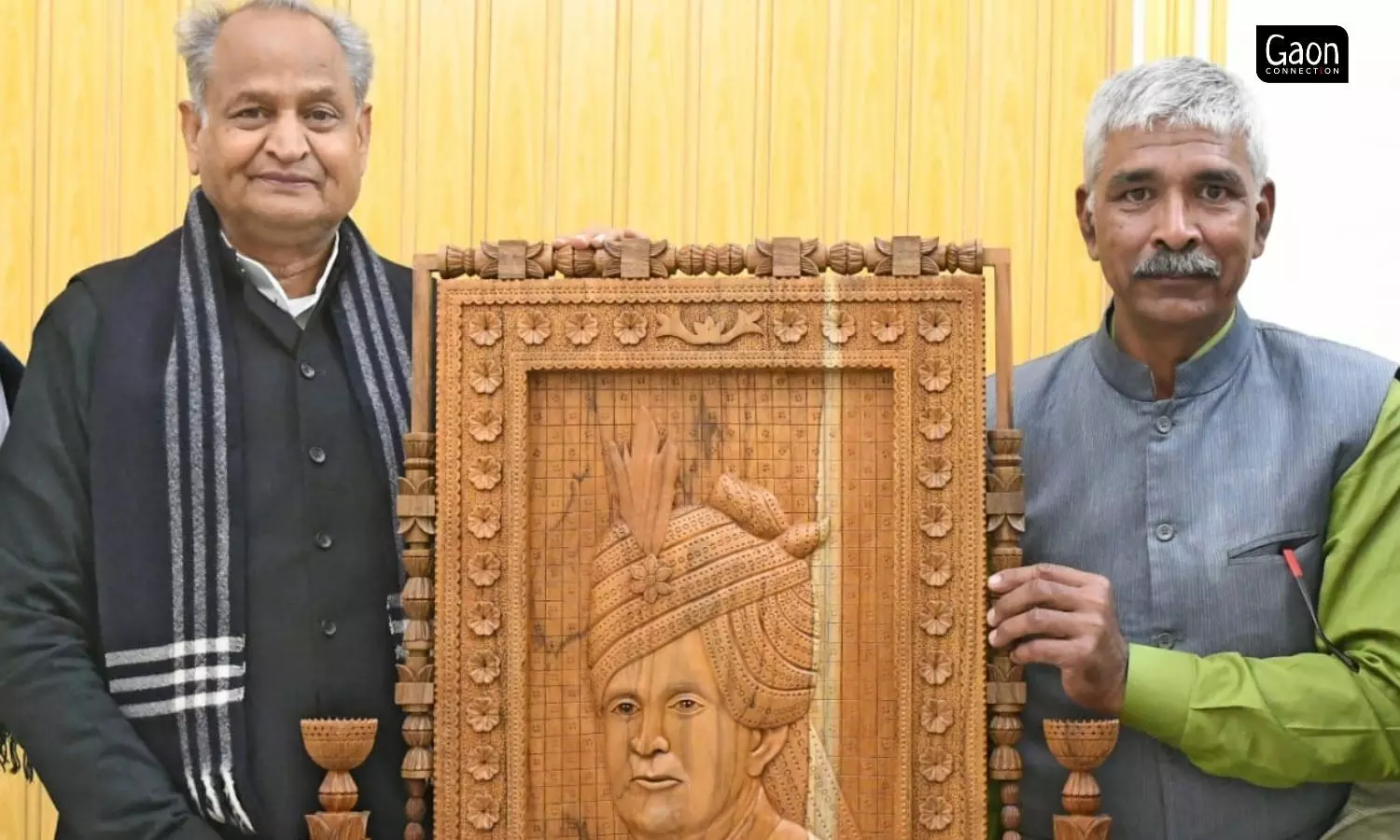Hanumangarh, Rajasthan
Trilokchand Mandan, a farmer, when he is not growing food, uses his hands to create works of art. He is from Dhandela village that lies about 67 kilometres away from the district headquarters in Hanumangarh, Rajasthan.
“I use the wood of teak, the Rohira tree indigenous to the desert environment, sheesham and sandalwood, to make my wooden artefacts,” Trilokchand told Gaon Connection.
The farmer-cum-wood sculptor uses no mechanised devices to do his sculpting. “All my tools are hand held and manual,” he said. He buys the wood and sometimes, he said, people gift him pieces of wood to carve on.
One of his most challenging works, he said, was carving the Sanskrit scriptures from the Patanjali Yoga Sutra in 90 days. “I had to carve out one letter at a time accurately on wood,” he told Gaon Connection.
In a portion of his home, which is located about 140 kilometres from the state capital Jaipur, Trilokchand has created a museum of his sculptures and other wood carvings. Many people visit the museum.
Training in wood works
His tryst with wood began in 1986 when after completing class nine, he left for Shekhupur Dadoli village in Haryana to apprentice in furniture-making.
“Sahabram Bhadrecha taught me to work with wood. I learnt how to make furniture, doors as well as wooden implements needed for agriculture such as ploughs. But, I soon returned home to take up farming, but continued to carve things out of wood,” he said.
Also Read: Molela, Kaavad, and Phad — Rajasthan’s traditional art forms get a makeover
Dhandela village is home to about 1000 families, most of whom are involved in agriculture. But there are about 20 families who work with wood, one of which is Trilokchand’s.
He caught the eye of photographer and artist, S Kumar from the neighbouring village of Topariya village, who encouraged him to explore his innate talent.
“I started serious carving in 1997. My first wooden sculpture was of Lord Ganesh and since then I have made more than 1,000 sculptures,” said Trilokchand.

When Trilokchand Mandan is not growing food, he uses his hands to create works of art.
Farmer turned sculptor
He does not limit himself to the images of gods and goddesses, but has also carved figures of folk heroes, famous personalities, scenes from Rajasthani folklore and so on.
“It took me only one month to sculpt a six-foot wooden likeness of Swami Vivekananda,” he said.

Despite all the praise and appreciation, there is no real support for his art.
The statue of Swami Vivekananda was commissioned two and a half years ago by the then pradhan of Nohar panchayat, Amar Singh Puniya. The statue was placed outside the office of the panchayat.
But Trilokchand still identifies himself as a farmer.
“I am still a farmer. I own 10 bighas of land, and have taken another 12 bighas on lease. I cultivate cotton, cluster beans, bajra, mustard and wheat. That is the main source of my income,” he smiled. His sons work with him on the fields.
“But when the mood takes me I start carving. I have no fixed time, but once I start, I cannot rest till I have completed the piece,” he said.

“I have no fixed time, but once I start, I cannot rest till I have completed the piece.”
“I have not seen too many artistes such as Trilokchand in or around Hanumangarh district. His work speaks for itself. Much more should be done to patronise such artists,” Puniya, the former pradhan of Nohar panchayat, told Gaon Connection.
Miniature craft
It is not just humongous carvings and sculpting Trilokchand does. He has carved a wheat stone grinder in wood that is just six millimetres big.
He has made a miniature plough that is only three mm and a four mm ring that have found a place in World’s Greatest Record, OMG Book of Records and the Ideal Indian Book of Records has declared these as a world record.
Trilokchand makes it a point to gift his works of wooden art to any important visitor to his village.
“Recently, I gifted a wooden sculpture to Chief Minister Ashok Gehlot of his father, Jadugar Lakshman Singh, and the chief minister was overcome by emotion,” Trilokchand recalled.

Trilokchand gifted a wooden sculpture to Chief Minister Ashok Gehlot of his father, Jadugar Lakshman Singh.
Also Read: The Galicha Makers of Dholpur
Despite all the praise and appreciation, there is no real support for his art, said Trilokchand. He rarely is able to sell any of his crafted work.
“We are always ready to support artists such as Trilokchand Mandan. We have issued such artists with artisans identity cards. Cardholders can freely attend any exhibition or show across the country,” Kiran VN, deputy director, Handicrafts development department, Jodhpur, told Gaon Connection.
According to him, the handicrafts development department paid for the travel, boarding and lodging of such artists wherever they went. “We also help them get stalls at the exhibition, sometimes free of cost,” he said. The deputy director also said that the identity card holders could apply for any awards they wanted.
“Last year Trilokchand, who is an exceptional artist, applied for the National Award. He cleared two rounds of the applications but did not make it to the third. But we will always extend whatever support he needs,” said Kiran VN.
Meanwhile, Trilokchand is passing on his art to students, of which two are his own sons. People from outside the village come to him to learn too.
“Wooden sculpting needs more support and Rajasthan should have a State Woodcraft Board. This will not only inspire more artists to continue with their work, but it will also ensure the art does not die,” said Trilokchand.


















